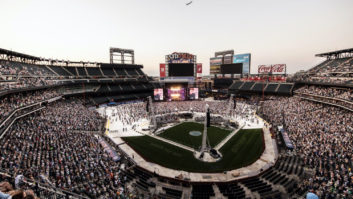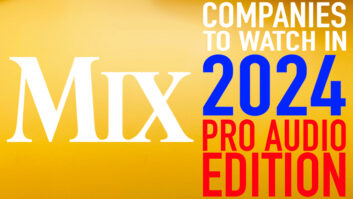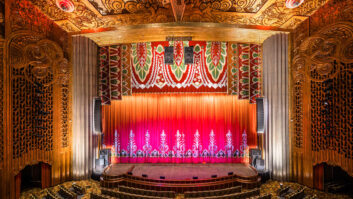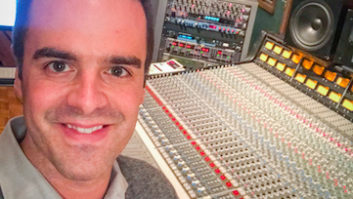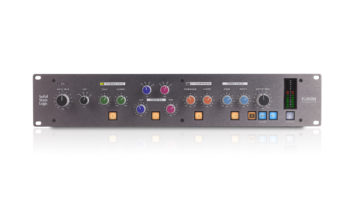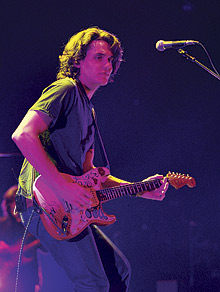
All photos: Steve Jennings
Few artists are both accomplished singer/songwriters and instrumental virtuosos, but John Mayer appears comfortable in both roles. Mayer’s 2001 breakaway album, Room for Squares, showcased his thoughtful lyrics over a rocked-up version of his acoustic solo act. Now, the artist is showing his deep love of the blues and skill with an electric guitar — forming the John Mayer Trio with bassist David LaBruyere and drummer Stephen Chopek, with a bit of collaborative help from blues giants B.B. King, Buddy Guy and Eric Clapton. At the Madison Square Garden (New York City) stop on his current tour, Mayer represented his latest effort, the double Grammy-winning album Continuum, with an 8-piece band (drummer JJ Johnson, bassist David LaBruyere, keyboardist Tim Bradshaw, guitarists Robbie McIntosh and David Ryan Harris, saxophonist Bob Reynolds, and Brad Mason, trumpet/flugel horn) that ably shifts between soul-influenced pop, blues rock and the acoustic-based songs of Mayer’s earlier days.
Chad Franscoviak, the tour’s front-of-house engineer, has been with Mayer since the beginning. “I started out as a studio engineer in Atlanta,” he says. “I met John through David LaBruyere at a club called Eddie’s Attic. John had just moved to Atlanta and started playing around town. The three of us eventually ended up in the studio together. One night, John was in the booth, and in between takes, he mentioned that at some point, once his career took off, he would need someone to come out and mix his live shows and wondered if I would be interested. I told him I’d love to, although I had no idea how I’d pull it off since I’d never mixed a live show before. It wasn’t long after that conversation that he recorded Room for Squares, and before I knew it, I was on the road with him. Luckily, he had a lot of faith in me, which allowed for my tremendous learning curve.

FOH engineer Chad Franscoviak (left) with systems engineer Scott Frey
“The trickiest part about a mix is always the layering,” Franscoviak continues, sitting comfortably at the tour’s Showco-provided Digidesign VENUE board. “Each instrument needs its own sonic space to occupy, where it can exist without being stepped on by any other instrument. The more instruments being played simultaneously, the trickier it can get. For me, finding the space for everything always begins with the source, then EQ, then compression and effects. I like to use reverbs to place sounds behind other sounds to free up space on the left/right plane.”
Franscoviak says that VENUE’s sound and intuitive interface are attractive traits for a tour such as this. “The plug-ins are great, as well,” he adds. “But above all, the virtual soundcheck feature is what I appreciate the most. When laying out my mix, I use a lot of subgroups. I make separate subgroups for my drums, bass, electric guitars, horns, et cetera. I use an API 2500 [stereo bus compressor] over my drum subgroup, Empirical Labs Distressors on my bass guitar and an Alan Smart C2 [compressor] on John’s acoustic guitars.” Onboard effects include TL Space reverbs for drums, keyboards, acoustic guitars and background vocals; and Princeton Digital 2016 reverbs for the horn section.
Mayer plays Fender Strats and Martin JM Acoustic guitars. He sends the electrics through three “John Mayer Signature Series Two Rock” amp heads and a Dumble Overdrive Special amp head driving three Two Rock 2×12 guitar cabinets and a Leslie cabinet. “The combination of these sources account for his electric guitar tone,” Franscoviak explains. “I assign all of these inputs to a stereo subgroup and strap a Universal Audio 2-1176 over it.”
But what about Mayer’s signature vocal? Franscoviak answers that Mayer’s vocal chain is very simple: Shure Beta 58A into the desk with a Universal Audio 1176 inserted. Also in his bag of tricks for vocals is onboard de-essing and Eventide effects. “I tend to choose my live mics based on two criteria: whether it sounds natural and how tight its polar pattern and effective its rejection,” Franscoviak adds. “For those reasons, I’ve ended up with a lot of Beyer M88s onstage. I use them for my bass drum, tom-toms, guitar amps and horns. I use SM57s on the snare drum and additional guitar amps. I use an AKG 451 with a -20dB pad on hi-hats and Neumann KM184s for overheads.” Other mics of note include an Electro-Voice RE20 (with an Avalon U5 DI) on bass, and Royer 121s (top) and Sennheiser 421 (bottom) on the Hammond B3 Leslie cab. Mayer’s acoustic guitars also run through Avalon U5 Dis.
ONE MAN, TWO BOARDS
Monitor engineer Mike Adams mixes on two Midas Heritage consoles: a 3000 and a 4000. All monitors are in-ears, with eight stereo mixes going to Sennheiser G2 units with Clair Bros. combiners and helical antennae, and four stereo mixes going to hard-wired Shure PSM bodypacks for stationary positions. For outboard effects, he uses 16 channels of the new Clair custom Dolby Lake Processors, two Lexicon PCM 90s, an Eventide H3000, four Avalon 737 compressors (for Mayer’s vocal and acoustic guitars), four dbx 160x compressors on the band acoustics and bass channels, eight Aphex gates on the drums and a Midas XL88 on a submix for the internal talkback system.
Adams is particularly excited about the new Sensaphonics ProPhonic 2X-S ear molds they have begun to implement on the tour. “I expect to see a lot of musicians going this route,” he says. “You can actually ‘hear’ what’s really going on due to the active transducers implanted in the ears; there’s a data or recording output on the preamp pack itself, which is incredible for the testing we’re doing and for recording possibilities. You can even control the level of ambience entering your head — from very soft to wide-open — and it’s easy to use and understand.

From left: Showco’s ML Procise III, FOH engineer Chad Franscoviak, monitor tech Andy Hill, systems engineer Scott Frey and monitor engineer Mike Adams; not pictured: audio tech Rudy Paniagua.
“All in all, we have had great success with the tools that we have out here,” Adams continues. “It’s getting more volatile as each day passes, however, with multi-RF channels in the current consumer frequency range, so my advice is get with the experts and do your own research on what’s happening to our airwaves, get the best tools available and keep your cool.”
THE SHOWCO RIG
The tour uses a Showco Prism system, with four rows of eight columns per side for arena shows and 16 Prism sub-cabinets on the floor. Franscoviak has used the P.A. for years and works closely with system engineer Scott Frey. “Although there are a few line arrays out there that I really like the sound of, I find that whenever I mix on them, I miss the excitement of the Prism P.A.,” the FOH engineer says. “In the end, for my taste, a rock show is successful only when it’s exciting. It’s exciting to me when I can physically feel what the band is doing onstage, as well as hear it. While line arrays allow me to hear the music, they don’t allow me to feel the music in the same way.”
The Madison Square Garden show closed out this leg of the Continuum tour, which continues this month with dates in Australia and Canada, and returns to the U.S. this summer. Franscoviak considers himself fortunate to be doing sound for Mayer. “He’s such an amazing musician, as are all the players in his band, so it makes for a great night of music every night.” And despite being a world-class engineer with one of today’s most successful artists, he sometimes feels a little incredulous at the unexpected turn his career has taken. “It took awhile to get my head around live mixing,” he says. “In fact, I still feel like at any minute, someone is going to tap me on the shoulder and tell me I’m busted: ‘Nice try, buddy. You had us fooled for a minute, but now it’s time to go get a real job!’”
Gaby Alter is a New York City-based writer.
